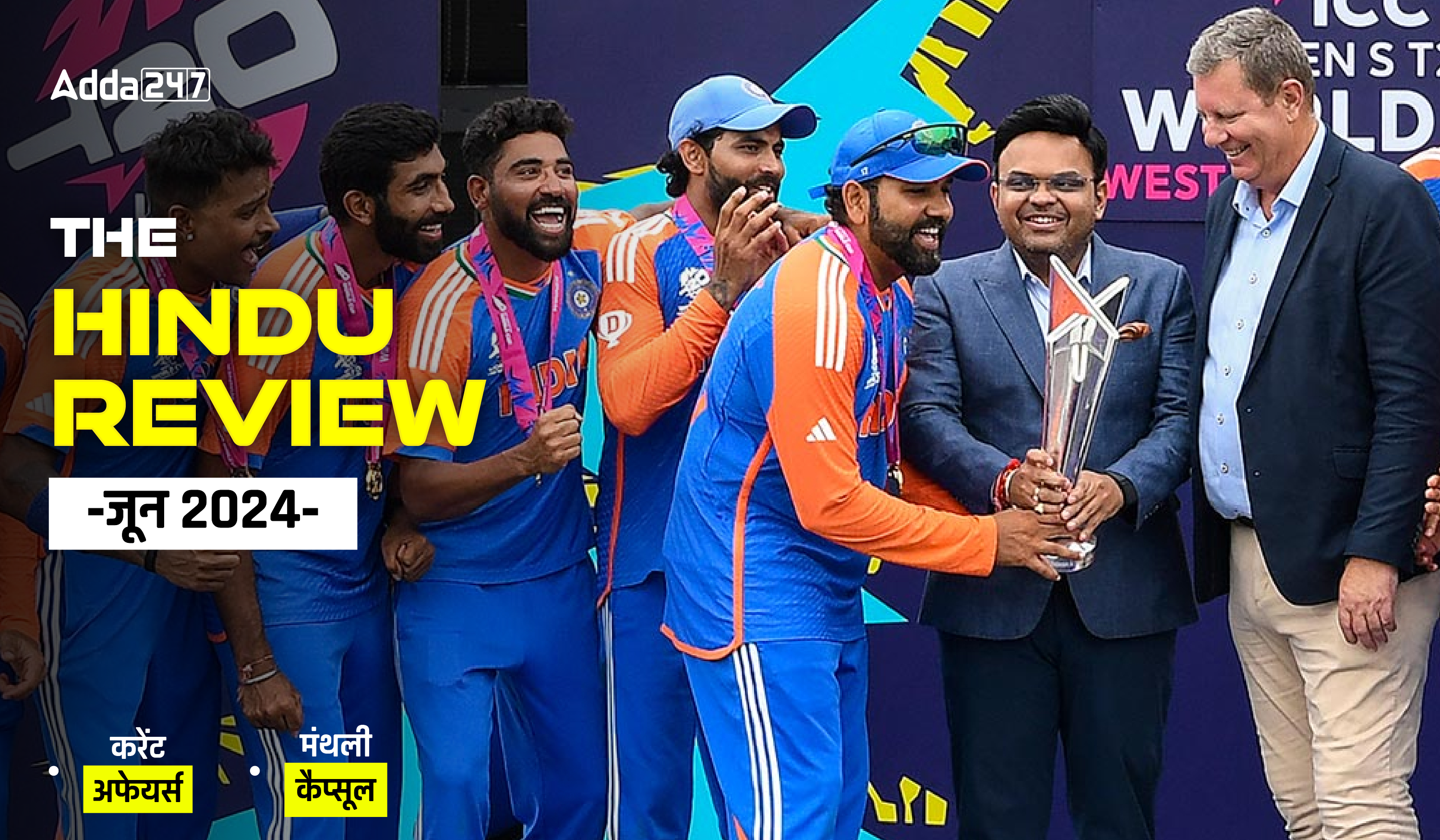Following is the English Language Full-Length quiz to help you practice with the best of latest pattern questions.
Directions (1-10): Read the following passage carefully and answer the questions given below them. Certain words/phrases have been printed in bold to help you locate them while answering some of the questions.
India can increase its GDP by up to 60% by 2025 by enabling more women to participate in its workforce, a 2015 study by the McKinsey Global Institute had stated. However, social and cultural constraints can prevent this from becoming a reality. Many women who work outside home still have primary household and parenting responsibilities that need to be balanced with their work life. Studies estimate that India’s ambitious target of achieving 175 GW of renewable energy (RE) by 2022 could create 3,30,000 jobs in the wind and solar energy sectors alone. Can this rapidly growing industry create jobs and entrepreneurial opportunities for women? And can these opportunities provide better salaries and health-care benefits, skilling and training opportunities, and enhance the quality of life for women and their families? What can decision-makers — in government and in the private sector — do to support the inclusion of more women in this growing sector?
The problem and the opportunity are both clear. According to the World Bank, more than 270 million Indians live in poverty. Further, studies by the International Energy Agency, an autonomous intergovernmental organisation, show that about 240 million people lack basic electricity services. The government has committed to installing 175 GW of RE by 2022. Several of these installations will be in rural areas, where a large number of the poor live. Can the new RE projects be planned in a manner that also creates good quality jobs for women in these areas? Currently, India’s RE industry sector, as with other sectors, has low participation of women. India ranks a poor 120 among 131 countries on female labour force participation, according to World Bank data. A majority of women currently employed in the RE sector work at project sites, doing civil masonry work, which is temporary and labour-intensive with little potential for future growth. Moreover, the working conditions on many sites are not always suitable for women as they are devoid of safety and support systems
Where there is a need for more skilled or semi-skilled labour, fewer women can respond due to existing barriers to formal education and training. Technical training institutes do not admit applicants who have not graduated Class 12. And even where they meet the prerequisite for admission into training institutes, the institutes tend to be located in towns and cities, making it difficult for rural women to effectively participate, especially when they are also expected to carry out other household responsibilities. Consequently, there are very few women in production, facilities, and operations and maintenance roles in the RE sector.
So, what will it take for women from poorer and rural communities to access jobs in the RE sector? In a recent study, we found that jobs in the RE sector can impact poverty, provided several “tweaks” are made to the existing systems. Particularly with the growth of the decentralised RE and off-grid energy sector, there is significant potential to include local women in the workforce. Overall, the study concluded that if the government, clean energy enterprises, training institutes and civil society work together to implement these “tweaks”, India could create good-quality employment opportunities that can support the inclusion of more women. But such interventions need to be designed with women at the centre and not as an afterthought.
Training institutes could reduce the bar on entry, allowing for less formally educated women to learn new skills and receive training. Training should be customised to respect specific needs like location, hours of engagement, safety and sanitation. Mobile training modules that can cater to small groups of women in remote areas can be developed. Training institutes and civil society organisations should collaborate and strengthen connections with clean energy enterprises to help trained women secure employment. This sensitisation to women’s specific needs can help increase participation of women in the RE workforce. If the public and private sectors come together to bring such jobs to women, particularly in poorer communities, India’s transition to clean energy could also improve the quality of life for women and their families.
Q1. As per the passage, what are the reasons that hinder women participation in workforce in India?
Q2. What is the plight of women currently employed in the Renewable Energy sector?
(I) Temporary and Labour-intensive work
(II) Unsuitable working conditions and lack of safety
(III) Less scope for future growth
Q3. As per the passage, What are the barriers to formal education and training for women?
(I) Technical training institutes do not admit applicants who have not graduated Class 12.
(II) The institutes tend to be located in towns and cities, making it difficult for rural women to participate.
(III) Civil Masonry work require less number of women.
Q4. What initiatives can training institutes take to help more women take up training?
Q5. What is the style of writing used by the author in the passage?
Q6. As per the passage, what amount of renewable energy generation is targeted by India by 2022?
Q7. Choose the word which is MOST SIMILAR to the word given in passage. DEVOID
Destitute: extremely poor and lacking the means to provide for oneself.
Q8. Choose the word which is MOST SIMILAR to the word given in passage. PREREQUISITE
something else to happen or exist.
Imperative: of vital importance; crucial.
Q9. Choose the word which is most opposite to the following word given in bold in the passage CONSTRAINT
Q10. Choose the word which is most opposite to the following word given in bold in the passage BARRIER
Directions (11-15): In the passage given below there are blanks which are to be filled with the options given below. Find out the appropriate word in each case which can most suitably complete the sentence without altering the meaning of the statement.
Scripting humour is no light gag. Comedians are always on the job, trying to (11)………… humour in (12)………….. life in an effort to build a connection with the audience. “For a beginner, the key is to participate in as many open mics as possible. That’s the best way to (13)…………….. your humour and understand what works best for the crowd,” says Manik Mehta, who has been a part of Vizag Komedians from the start. The open mics have not only helped the standup comedy culture grow in the city, but have also helped cafes draw more crowds, in what Mehta describes as a win-win situation. “The city has a lot more potential. The challenge right now is to find newer locations,” he adds. Colleges have also been warming up to standup comedy shows, through their annual festivals. GITAM University recently hosted a (14)……………… by comedian Abish Mathew, while IIM-Visakhapatnam and Indian Institute of Petroleum and Energy have also brought in popular names from the standup field. One of the biggest advantages of such shows is that (15)………………….. get to open for these established comedians, giving them a moment in the brighter spotlight, and also a chance to watch bigger talents in action.
Q11.
Q12.
Q13.
Q14.
Q15.
Directions (16-20): In each of the questions given below a sentence is given which is then divided into five parts out of which last part is correct. There are errors in three out of four remaining parts and therefore only one of the parts (other than the bold one) is correct. You must choose the grammatically correct part as your answer. If there is no error in any of the part of the sentence, then marl option (e) .i.e. “None of these” as your answer
Q16. But they could strived harder(A)/ to upheld democratic rights(B)/ and constitutional principles at home(C)/. That is critical in(D)/ promote sustainable development(E).
Part(A): 'strive' will replace 'strived'
Part(B): 'uphold' will replace 'upheld'
Part(D): 'to' will replace 'in'
Thus, option (C) is the correct alternative.
Q17. The agreement with Mehta was towards(A)/ ‘partial assignment of the rights to made records(B)/ in gramophone and in talkies and no other(C)/ sound produced broadcast device’ for a lump sum(D)/ of Rs. 450 and a royalty of one anna per record sold(E).
Part(B): 'made' will replace 'make'
Part(C): 'any' will replace 'no'
Part(D): 'producing' will replace 'produced'
Thus, option (A) is the correct alternative.
Q18. Parliament’s recent approval in the redrawn(A)/ electoral constituencies has reinforce(B)/ allegations of gerrymandering(C)/ and unequal sizing to electoral districts(D)/ to benefit the National Front(E).
Part(A): 'of' will replace 'in'
Part(B): 'reinforced' will replace 'reinforce'
Part(D): 'of' will replace 'to'
Thus, option (C) is the correct alternative.
Q19. However, the journalistic community which questions(A)/ the wisdom of people who indulged(B)/ in whataboutery cannot taken comfort in(C)/ citing the instances to getting(D)/ it right when someone points out a shortcoming(E).
Part(B): 'indulge' will replace 'indulge'
Part(C): 'take' will replace 'taken'
Part(D): 'of' will replace 'to'
Thus, option (A) is the correct alternative.
Q20. The past shaped the way we are(A)/ today — not only the world we grow out(B)/ in, where we struggled with(C)/ conflicts the seeds of whom(D)/ were sown long ago(E).
Part(B): 'up' will replace 'out'
Part(C): 'struggle' will replace 'struggled'
Part(D): 'which' will replace 'whom'
Thus, option (A) is the correct alternative.
Directions (21-25): In each of the questions given below a sentence is given which is then divided into five parts out of which one part is incorrect. You must choose the grammatically incorrect part as your answer.
Q21. Meanwhile, in an effort to keep(A)/ its flock together, the party herd(B)/ its elected partymen and two(C)/ Independent legislators to a resort(D)/ on the outskirts of the city(E).
Q22. It was a long wait for the tribals(A)/ from the morning for their near and dear(B)/. They even refused to take(C)/ breakfast and water as all(B)/ of them were stricken of grief(E).
Q23. Pulling away the boat(A)/ is not difficult if the latest(B)/ equipment is with(C)/ us and if the boat(D)/ has not overturned.(E)
Q24. You deferred the case many a(A)/ time for the Centre. If that(B)/ had not happened, we(C)/ would not had(D)/ been in this situation(E).
Q25. A token amount will be fixed and the(A)/ employees can even go abroad by(B)/ not availing the facility in a(C)/ couples of years and using a lumpsum(D)/ amount in the third or fourth year(E).
Directions (26-30): Rearrange the following statements (A), (B), (C), (D) & (E) in the correct sequence and answer the following questions given below.
(A) Strategy proposed by the Chinese government that focuses on connectivity and cooperation between Eurasian countries
(B) The initiative was known in English as the One Belt and One Road Initiative (OBOR) until 2016
(C) And the ocean-going Maritime Silk Road (MSR)
(D) Primarily the People's Republic of China (PRC), the land-based Silk Road Economic Belt (SREB)
(E) The Silk Road Economic Belt and the 21st-century Maritime Silk Road or The Belt and Road Initiative (BRI) is a development
Q26. Which is the FIRST sentence of the sequence after the rearrangement of the above sentences?
The correct sequence is EADCB; E
Q27. Which is the SECOND sentence of the sequence after the rearrangement of the above sentences?
Q28. Which is the THIRD sentence of the sequence after the rearrangement of the above sentences?
Q29. Which is the FOURTH sentence of the sequence after the rearrangement of the above sentences?
Q30. Which is the LAST (FIFTH) sentence of the sequence after the rearrangement of the above sentences?





